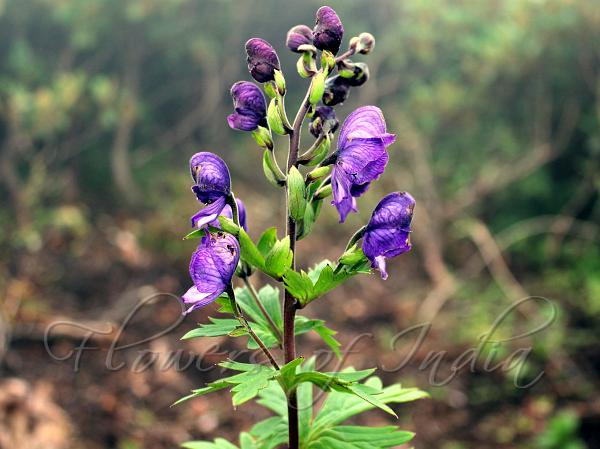|
| Lethal Monkshood |
|

|

| File size | 520866 |
| Original date | 8/15/12 6:47 AM |
| Resolution | 0 x 0 |
| Flash | Flash did not fire |
| Focal length | 29.0mm |
| Exposure time | 1/50s |
| Aperture | 4.5 |
| Focus Distance | |
| Metering Mode | Multi-segment |
| Camera make | Canon |
| Camera model | Canon EOS 550D |
| Sensor type |
|
|
|
|
Photo: |
Botanical name: Aconitum lethale Family: Ranunculaceae (Buttercup family)
Synonyms: Aconitum atrox, Caltha codua, Aconitum balfourii
Synonyms: Aconitum atrox, Caltha codua, Aconitum balfourii
Lethal Monkshood is an erect, hairless shrub that
is more than 1.5 m in height. It is named for Sir Isaac Bayley Balfour,
19th century professor of botany. Root tubers are 7-12 cm long and are
extraordinarily heavy. Flowers are borne in racemes with five
petal-like sepals, and free upper one petals form a large erect hood.
Upper two petals form nectar secreting spur, lower two petals are
small. Stem is simple or branched, about 1.2 m high, dull
purplish-brown. Lower leaves are long stalked and upper ones are short
stalked. Inflorescence is about 29 cm long containing many flowered
racemes with yellowish tomentum. There are five blue sepals with
velvet-hairy, uppermost helmet-shaped. Petals hairless, upper two
hooded enclosed in the helmet. Stamens are many; filaments bristly.
Seedpods are 2-5, stalkless, silky velvet-hairy. Seeds are broadly
winged along raphe. Lethal Monkshood is found in the Himalayas, from
Garhwal to Nepal, at altitudes of 3000-3600 m. Flowering:
September-November.
Medicinal uses: Lethal Monkshood is used
Ayurveda, Traditional chinese medicine. The aqueous extract of the
root induces hyper-tension through action on the sympathetic nervous
system and in higher doses, it becomes lethal.
Lethal Monkshood is used
Ayurveda, Traditional chinese medicine. The aqueous extract of the
root induces hyper-tension through action on the sympathetic nervous
system and in higher doses, it becomes lethal.
Medicinal uses:
 Lethal Monkshood is used
Ayurveda, Traditional chinese medicine. The aqueous extract of the
root induces hyper-tension through action on the sympathetic nervous
system and in higher doses, it becomes lethal.
Lethal Monkshood is used
Ayurveda, Traditional chinese medicine. The aqueous extract of the
root induces hyper-tension through action on the sympathetic nervous
system and in higher doses, it becomes lethal. | Identification credit: V.P. Bhatt, Amber Srivastava | Photographed in Bhadarwah, Jammu & Kashmir. |
• Is this flower misidentified? If yes,